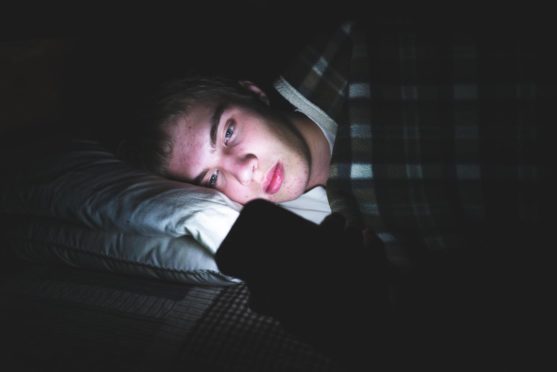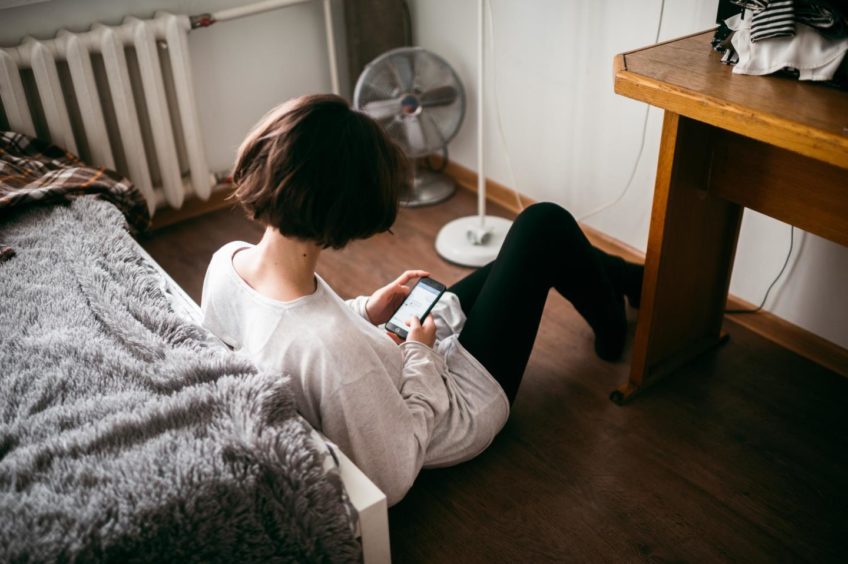As we gradually re-emerge from the Covid pandemic, no one is assuming that everything is going to go back to how it was before.
But the follow-on problems of coronavirus don’t just relate to long Covid and chronic fatigue. The pandemic is also casting a huge shadow over the country’s mental health, most specifically, for teenagers and young people.
If lockdown at its height drove us all a bit stir crazy, the impact on youngsters has been much worse.
Kept away from their friends, unable to go to school and with no chance of socialising face to face, our teens and young adults missed out on key milestones and formative experiences, and relied instead on their phones for company.
Which is where it all starts to go wrong.
A recent report published in the Journal of Adolescence reveals there has been a big increase in loneliness and unhappiness among teenagers since 2012.
It is based on a survey of more than a million young people in 37 countries.
The report doesn’t definitively blame the use of mobiles for this downturn, but states clearly that “the psychological well-being of adolescents around the world began to decline after 2012, in conjunction with the rise of smartphone use”.
During the long months of lockdown, when young people turned to their phones for company, they only made things worse.
Or rather, the social media apps installed on their mobiles did.
While no academic study has pointed the finger of blame solely at sites like Snapchat, Instagram and Facebook, there is ample evidence to suggest these social media apps can be toxic.
Social media is real life for young people
An article in Psychology Today stated that young people’s use of social media ‘affects their sense of self and makes them more likely to feel envious of others and worse about themselves’.
So why don’t they just turn off their phones?
It’s sometimes hard for older generations to understand how all-consuming and pervasive social media is.
Young people’s friends, jobs, interests, shopping, and social lives are all run through these apps.
If all your friends are on Snapchat and Instagram, you’d better be, too, otherwise you won’t have any friends
If they want to exist and have a life, switching off or disconnecting is not really an option, nor a quick and easy fix.
Think of it as peer pressure on a massive scale.
If all your friends are on Snapchat and Instagram, you’d better be, too, otherwise you won’t have any friends.
The statistics on smartphone usage are alarming. By the age of 11, 90% of children own a mobile phone; by secondary school age, ownership is described as “universal”.
The obsession starts young – 53% of children have their own phone by the age of seven.
There’s even a term used to describe the very real panic and fear felt when youngsters have their phones taken away from them – “nomophobia”, meaning no mobile phone phobia.
This reliance on technology encourages young people to turn away from the real world in favour of communicating via the gadget in their hand, leading to serious and damaging results.
A former colleague of mine now works with the DWP, where his team is specifically tasked with placing 18-25 year-olds in the workplace.
He shared his frustration over the difficulties this presents – young people who struggle to communicate face-to-face and who can’t make eye contact.
Some find it impossible to make small-talk with strangers and genuinely struggle when confronted with job interviews.
Mental health support must catch up
If their life till then has consisted of clicking a like button on an app and posting the occasional two-word comment under a photo, how on earth can they be expected to hold eloquent conversations in real life?
Even if we acknowledge how damaging smartphones can be, there’s no way to put this particular genie back in the bottle.
Society has changed drastically and as confusing as it may seem, this is how the world works now.
The system is so stretched right now, the average waiting time for an appointment is approximately six months
The detrimental effect of smartphone use on young people is often described as “the new frontier” in mental health.
But while the impact on youngsters’ mental health is recognised and acknowledged, the support network in place is far from sufficient.
Teens are entitled to free counselling and therapy sessions on the NHS, but the system is so stretched right now, the average waiting time for an appointment is approximately six months.
The Courier recently reported children and teenagers waiting to be seen in Fife were delayed by a combined 197,918 days between 2017 and 2020.
Tayside has previously had the longest waiting times in Scotland.
When it comes to any type of change, sharing your thoughts with someone you trust can help normalise them and it can be a relief.
In our three-part series, SAMH's Laura Glennie shares tips for coping with change for young people. Watch the full set now: https://t.co/Nuije3WesX pic.twitter.com/A9Yl3B6BR3
— SAMH (@SAMHtweets) August 5, 2021
The Scottish Association for Mental Health (SAMH) admits services are turning away teenagers each year.
They are victims of their own success, perhaps, as past campaigns have encouraged young people to be open about their mental health, and to speak out when they feel they are struggling.
SAMH recommend that at the very least, every secondary school in Scotland should have staff trained in mental health support, so young people can drop in any time they need help.
It feels like the very least we can do for this generation caught in this perfect storm.
Because as one youngster told me recently, “What’s the point in speaking out if there’s no one listening?”
Marie Penman is a journalist and former lecturer in journalism at Fife College.


